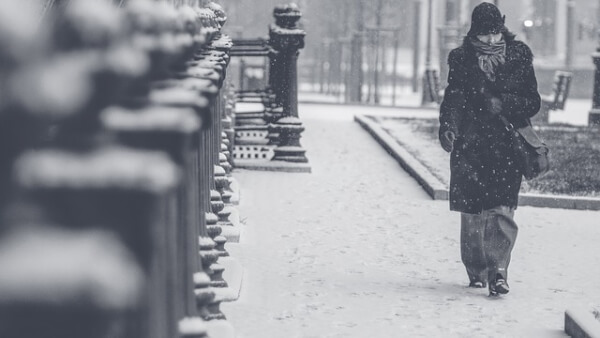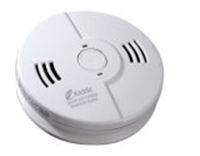Winter Storm Prep

Photo via Pixabay by Free-Photos
How To Protect Your Home–And Your Family–In An Emergency
Intro to this week’s Advisory – From time to time, readers contact me to offer a suggestion, a correction or, happily, a Guest Advisory! This week is an example. It was written by Oliver Lambert, co-creator of DisasterSafety. As its name suggests, his site focuses on safety resources including but not limited to hurricane, flooding, wildfire, blizzard, earthquake, and tornado. His mission is to provide the most updated and accurate info on how to stay safe before, during and after these disasters. For those of us who like to-do lists, this article has what you need for several of them! And if you want even more info, follow the links included. Thanks, Oliver!
Winter can be a fun time for many families, especially on snow days; sledding, building snowmen, and drinking hot chocolate are some of the best parts of cold weather.
However, winter storms can cause hundreds or even thousands of dollars’ worth of damage and can leave your home–and your family–exposed to the elements. Even if there’s no damage, there may still be power outages and other issues that can lead to emergency situations.
Fortunately, there are some simple ways to prepare for a major winter storm, and it’s important to do so as soon as the weather turns cold. In many parts of the country, fall and winter are unpredictable seasons, meaning the snow could fly at any time.
Being prepared means having the right tools to deal with Mother Nature plus a plan for your family’s safety.
Read on for some of the best ways to get started.
Winter Prep your home
It’s a good idea to walk from room to room inside your home and look for ways you can prep them for winter weather. This means reversing the direction your ceiling fans turn in so they’ll push down the warm air that collects near the ceiling; having your fireplace and chimney checked and cleaned; laying aside enough firewood to get you through the season; checking and replacing furnace filters and making sure the unit is in good working order; installing a carbon monoxide detector or replacing the batteries in the one you have; and protecting your pipes from freezing. For some tips from professional property managers on how to help your pipes stay warm even in freezing weather, read on here.
Think emergency
It’s important to think about how you’ll handle an emergency. If the power goes out, or if you get stuck inside your home due to heavy snowfall, what will you need to get through several days?
Backup generators, kerosene heaters or wood burning stoves (CO warning!), flashlights, extra batteries, a small radio, blankets, a reserve of food along with any cooking tools you’ll need, medication, and anything your pets may need is a good start.
Make a list and ensure you have everything you need to get yourself and your family through an emergency.
For tips on how to handle heating when the power is out, check out this article from the Red Cross.
Stock up on tools
Bad weather in winter means you’ll likely have to do some shoveling, so stock up on salt and make sure you have the right tools, including sturdy gloves that will protect your fingers from the cold and a shovel that’s in good shape. (The Red Cross article mentioned above reminds you not to overexert yourself in cold weather, too!)
Remember to have a camera handy for when the storm is over so you can photograph any damage for the insurance company. This includes damage to your roof, windows, deck, and gutters. If possible, take “before” photos of these areas in the fall, before the first snow. For more tips on how to handle any storm damage, check out this article from the real estate professionals at Redfin.com.
Get your car ready
Winterizing your car will take some collaboration between you and a mechanic, who can check fluids, tires, and windshield wipers and make sure everything is ready for the cold.
What you can do is stock the car with a jug of water, blankets (foil emergency blankets are compact and inexpensive), flares, a spare tire and set of tools, a flashlight, and a bag filled with snacks such as granola bars in case you get stranded for a little while.
Look outside
The exterior of your home is just as important as the interior when it comes to a winter storm. Branches that are dead or hang close to your house should be trimmed so they don’t become weighed down with ice, and the gutters should be cleaned so icicles don’t form and clog them up. Clear walkways and make sure you have plenty of salt or brine on hand to keep them from becoming slippery hazards.
Remember that each family member should be aware of your plans for winter weather; talk about what you’ll do in case of an emergency and where everyone should meet in case you get split up. Keeping communication open will ensure that everyone stays safe.
Thanks for reading, for making your own check-lists, and being ready for winter. Here in Southern California we continue to have historic high temperatures — 91 degrees on Thanksgiving Day! — and NOAA (National Oceanic and Atmospheric Administration) says that two-thirds of the continental US will likely experience warmer-than-normal conditions this winter season. So, things may not be quite as bad as they could be!
But no matter the long-range outlook, a cold snap or two will surely happen. Be ready.
Virginia
Your Emergency Plan Guide Team

 Here at Emergency Plan Guide, we have looked several times at the pros and cons of generators while we considered purchasing one for our own neighborhood. And we have told the story of what happened AFTER we purchased it, too!
Here at Emergency Plan Guide, we have looked several times at the pros and cons of generators while we considered purchasing one for our own neighborhood. And we have told the story of what happened AFTER we purchased it, too!
 Carbon monoxide is colorless, odorless and tasteless!
Carbon monoxide is colorless, odorless and tasteless!